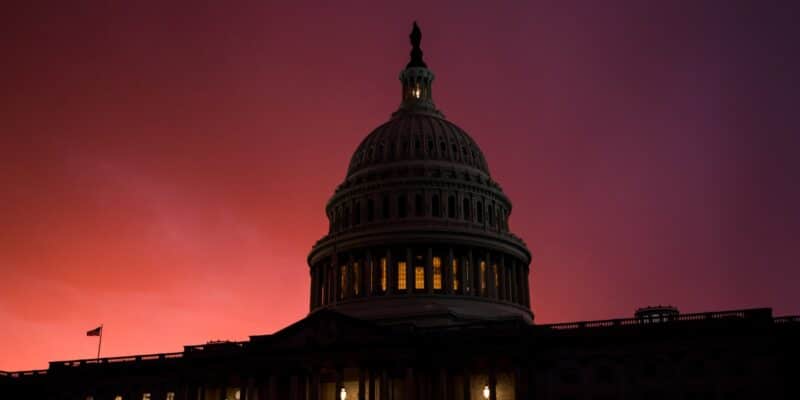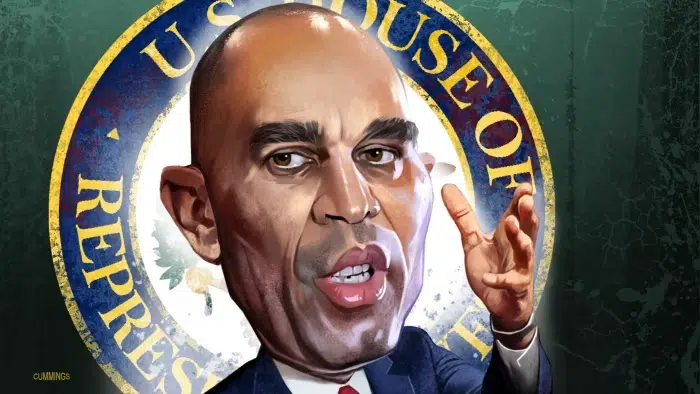
Harsh Reality of Newsom’s California Energy Policies Hitting Home
Did you hear the one about the California governor so intent on positioning his state as the environmental leader of the world that he’s pushing through public policies to ban all sales of most gas-powered vehicles by 2035, begin phasing out sales of fossil fuels almost immediately and has inspired officials in close to 20 other states to craft similar approaches? Democratic Gov. Gavin Newsom has also proposed an end to building gas-burning power plants, although the move away from fossil fuels has threatened his state with blackouts and forced him to reconsider using nuclear power.
But, then, did you hear the other part about how Newsom, who is running for re-election in November, grew so panicked on a recent sweltering day that energy use would exceed the capacity of the power grid, he asked owners of electric vehicles to not charge their rides?
As President Biden would say, “True story.”
It hardly stops there, however. During the first week of September, when residents up and down the Golden State suffered through an extreme heat wave with 100-plus-degree days, the state heavily relied on natural gas, one of the fuels Gov. Gavin Newsom wants to do away with. According to the United States Energy Information Administration, and reported by Reuters, California’s power grid relied on natural gas for almost half of its electricity generation to meet peak demand and during brief periods accounted for about 60 percent of the combined fuel mix tracked by the state-chartered nonprofit California Independent System Operator Corporation.
Then there’s that nagging fact that, with an estimated 70,000 total electric charging stations, California is far short of the 250,000 stations Newsom wants running by 2025 or the 1.2 million by 2030 Patty Monahan, a commissioner at the California Energy Commission, says the state will actually need to keep up with demand.
In mid-September, Newsom signed a series of environment-related bills that, among other things, seek to achieve carbon neutrality no later than 2045 and 90 percent clean energy by 2035, establish new setback measures protecting communities from oil drilling, capture carbon pollution from the air and advance nature-based solutions.
As for the added drain on the electrical grid from the anticipated explosion of new EVs on the road, David Victor, professor of industrial innovation at the UC San Diego School of Global Policy and Strategy, is one in a long list of energy experts who agree even though the stream of new EVs, which currently number slightly over 425,009, or about 16 percent of the new car market, will represent a significant overall increase in energy consumption from now until 2045 — Victor estimates a 25 percent jump over current demand — the state should nonetheless be able to meet that challenge.
That optimism isn’t shared by everyone in the energy and manufacturing sectors.
Akio Toyoda, president of Toyota Motor Corporation, told reporters at a press event in Las Vegas last week that staying in step with Newsom’s plan to ban gas emission vehicles would prove “difficult,” while battery-powered EVs will take longer to become accepted by consumers and part of the mainstream market than the “media” portrays they will.
Catherine Reheis-Boyd, President and CEO of the Western States Petroleum Association, which represents the 150,000 men and women who work in California’s oil and gas industry, said in a news release her group will be buying ad space in other states — the same communities where Newsom ran ads warning voters about their Republican and conservative politicians — to warn the people about Newsom.
“Governor Newsom’s policies are more aggressive and economically threatening to the regions struggling the most in the third most expensive state to live,” Reheis-Boyd said. “His policies have contributed to the higher costs consumers pay for fuel and energy. In fact, the first $1.30 Californians pay at the pump already goes to taxes and regulatory fees, and the programs he is mandating on our residents will only drive those costs higher.
“There is a better way to address the impacts of climate change than the path we are on,” Reheis-Boyd asserted. “To lessen the impacts on those that can least afford it, climate policies must be cost-effective, technology-neutral and protect the state’s skilled and trained workforce.”
So, did you hear the one about the governor who tried to manipulate an entire segment of the automotive market and energy sector for his own political ambitions and ended up galvanizing the electorate against him?
Dreams can come true…even in California.



